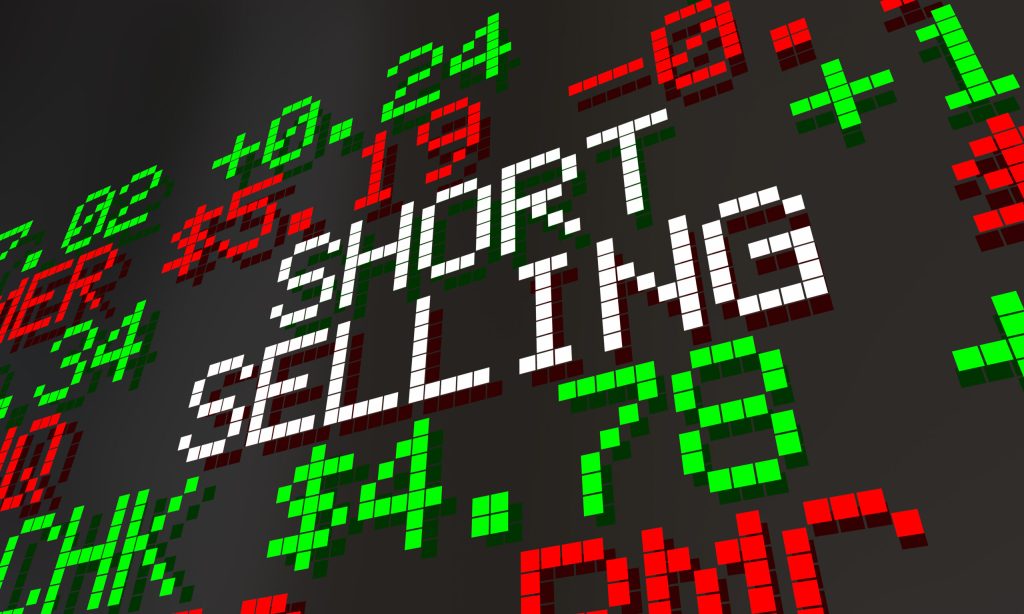Understand Your Rights. Solve Your Legal Problems


Short selling is a trading strategy that allows investors to profit from the decline in the price of a stock or financial asset.
But what exactly is it, how does it work, and why is it often viewed as a risky yet potentially lucrative approach to investing?
This article will break down the mechanics of short selling, the potential rewards and dangers it entails, and its legal and ethical implications.
At its core, short selling involves borrowing shares of a stock, selling them at the current market price, and then buying them back at a lower price. If the stock price falls, the short seller can buy back the shares at the reduced price, return them to the lender, and pocket the difference.
Here’s a simple step-by-step breakdown of how short selling works:
One of the most famous short selling stories in recent years is the GameStop short squeeze of 2021.
Hedge funds, including Melvin Capital, had shorted GameStop stock, betting that the video game retailer's stock price would fall as it struggled against declining sales.
However, a group of retail investors on Reddit's WallStreetBets forum noticed the massive short interest in the stock and decided to "squeeze" the short sellers by buying up shares of GameStop, causing the stock price to skyrocket.
Melvin Capital, which had shorted GameStop, suffered catastrophic losses, requiring a $2.75 billion bailout from other hedge funds. At one point, GameStop’s stock price jumped from under $20 to over $480, resulting in billions of dollars in losses for short sellers.
While short selling can offer significant rewards if a stock price declines, it is incredibly risky. Here’s why:
Unlimited Losses: Unlike buying a stock, where the maximum loss is the amount invested, short selling can lead to unlimited losses. If a stock’s price increases rather than decreases, the short seller must buy it back at a higher price, potentially losing more than they initially invested.
"Theoretically, when you short a stock, your losses are unlimited because the stock price can keep rising indefinitely," said John C. Bogle, the founder of Vanguard Group. "This is a fundamental reason why short selling is a high-risk strategy."
Margin Calls: Short selling requires a margin account, which means borrowing money to execute trades. If the price of the stock rises, the investor may receive a margin call, requiring them to deposit more funds into their account to maintain the position. If they cannot meet the margin call, the broker may liquidate their position at a loss.
Timing Issues: Even if an investor is right about a stock's eventual decline, short selling can take time to pay off. In the interim, the stock may rise, causing the short seller to experience significant losses. Timing is crucial.
Short Squeeze: A short squeeze, like the GameStop example, occurs when a stock’s price rises instead of falling, forcing short sellers to buy back their shares at a higher price to cover their positions. This can create a vicious cycle, causing the stock price to increase even further, resulting in greater losses for those short-selling.
Despite the risks, short selling can be incredibly profitable when executed correctly. Here are some potential rewards:
Profiting from Declining Stocks: If an investor is correct in predicting that a stock’s price will drop, short selling allows them to profit from the decline. In bear markets or during financial crises, short selling can be a lucrative strategy.
Hedging: Some investors use short selling to hedge other positions in their portfolios. For example, if an investor has a large position in a stock and wants to protect against the risk of it falling, they may short sell that stock as a form of insurance.
Opportunistic Profits: During market volatility, opportunities to short overvalued or mispriced stocks arise. Investors who are able to accurately identify such opportunities can benefit from significant price drops.
Short selling is legal in most countries, including the United States, the United Kingdom, and Canada, but there are regulations in place to prevent market manipulation.
In the U.S., the Securities and Exchange Commission (SEC) requires short sellers to "borrow" shares before selling them, ensuring that the process is transparent.
However, the practice of naked short selling—selling shares that haven’t been borrowed—has been banned due to its potential to artificially inflate supply and manipulate prices.
In some countries, short selling is outright banned in certain circumstances. For example, in 2020, many countries—including the European Union—temporarily banned short selling of certain stocks to prevent excessive market volatility amid the COVID-19 pandemic. This was seen as a way to protect struggling companies and prevent further market turmoil.
The ethical implications of short selling are hotly debated. Some argue that it provides market liquidity and allows investors to correct overvaluations, helping to keep markets efficient.
On the other hand, critics argue that short selling can be manipulative and harmful, especially when traders are betting against struggling companies.
“Short sellers can be seen as vultures, preying on the misfortunes of companies and industries,” said Robert J. Shiller, Nobel Prize-winning economist and professor at Yale University. "However, short selling can also help prevent bubbles and correct market inefficiencies, as long as it’s done transparently and within regulatory bounds."
Several high-profile hedge funds and investors are known for their short-selling strategies. One of the most famous short sellers is George Soros, who famously "broke the Bank of England" in 1992 by shorting the British pound, earning $1 billion in a single day as the British currency devalued.
In 1992, investor George Soros became globally famous for his successful short-selling bet against the British pound, a move that earned him over $1 billion in profits.
This event, known as “Black Wednesday,” occurred when Soros and his hedge fund, Quantum Fund, speculated that the pound was overvalued and would eventually be forced out of the European Exchange Rate Mechanism (ERM).
Soros's fund borrowed large amounts of pounds and sold them, betting that the British government would be unable to maintain the currency’s value.
When the Bank of England failed to defend the pound and withdrew from the ERM, the currency plummeted, allowing Soros to buy back the pounds at a much lower price.
This strategy is often cited as one of the most famous short-selling trades in history, cementing Soros's reputation as one of the world's most successful investors.
Hedge fund managers such as Jim Chanos and David Einhorn are also well-known for their short-selling activities. Chanos, in particular, famously shorted Enron before its collapse in 2001, earning huge profits as the company’s stock plummeted.
On the other hand, firms like Melvin Capital suffered disastrous losses due to short-selling positions, most notably during the GameStop short squeeze. Melvin was forced to close its position and received a bailout from other hedge funds, showcasing the risks involved in shorting volatile stocks.
Short selling can go terribly wrong, and the most glaring example is the collapse of Long-Term Capital Management (LTCM) in 1998. LTCM, a hedge fund founded by prominent Wall Street traders and economists, relied heavily on short-selling strategies.
When the Russian debt crisis triggered a global financial downturn, LTCM’s short positions blew up, leading to massive losses. The fund was eventually bailed out by a consortium of banks to avoid a systemic collapse.
Another infamous example is the Lehman Brothers collapse in 2008. Some investors bet against Lehman’s stock using short-selling strategies, ultimately profiting when the firm declared bankruptcy. However, Lehman’s downfall was part of a larger financial crisis that devastated the global economy.
Short selling is not for the faint of heart. While it can generate substantial profits, it comes with significant risks. The strategy works well in volatile markets or during times when stocks are overvalued or mispriced.
However, those who engage in short selling must have a high tolerance for risk and the ability to act quickly when market conditions change.
The ethical debate around short selling continues, with some arguing it’s a necessary part of a functioning market and others pointing to the potential for harm. Whether you view it as a legitimate strategy or as market manipulation, there’s no denying that short selling plays a crucial role in the modern financial landscape.
References





